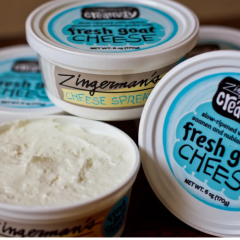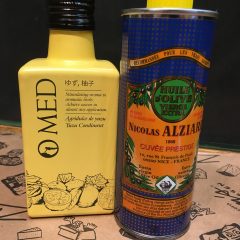
Fresh Goat Cheese from the Creamery
While this fresh goat cheese spread from the Creamery doesn’t get a lot of attention out in the world at large, I was thinking the other day that it ought to! It’s terrifically tasty and great to keep on the shelf in your refrigerator for easy access at any time of the day. It’s also […]
Read more »

Zingerman’s Art for Sale